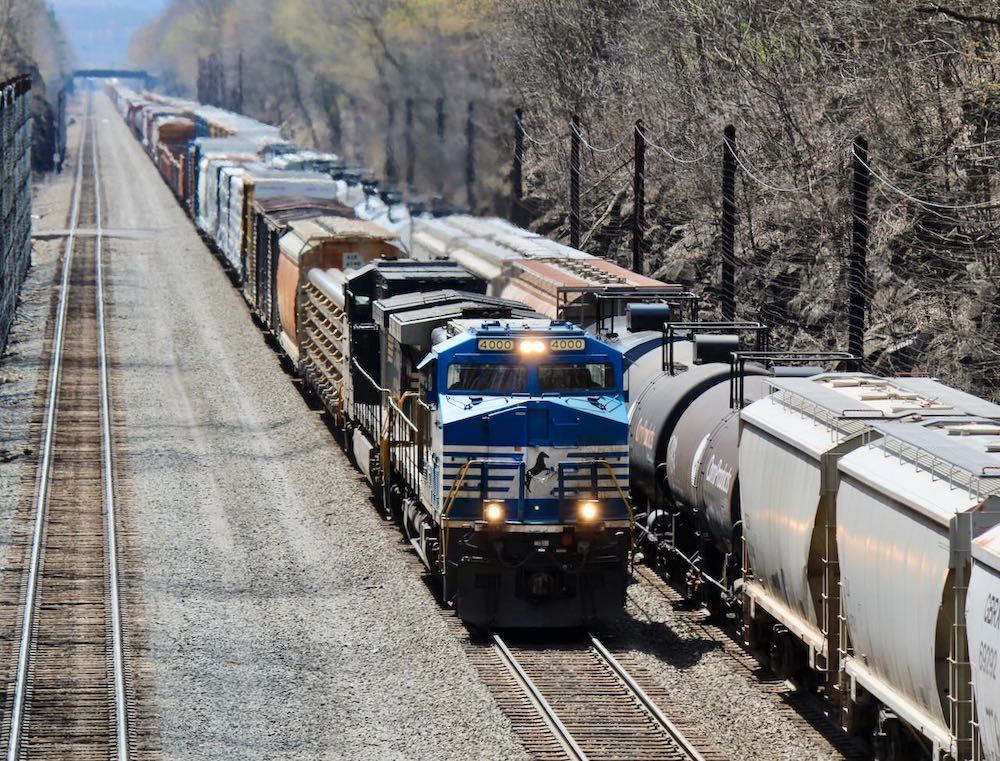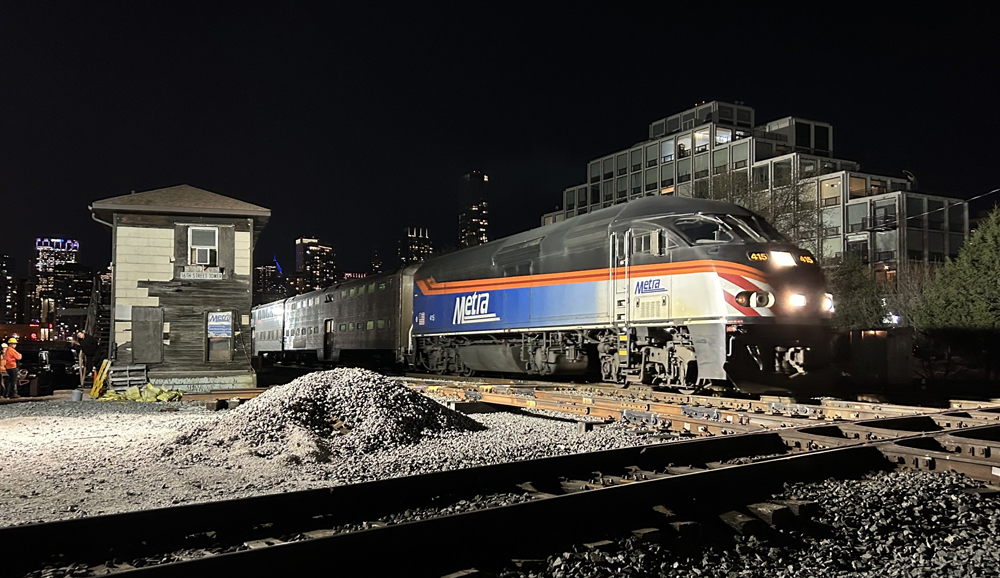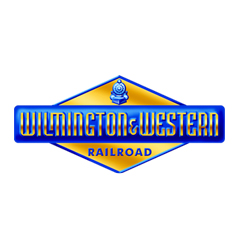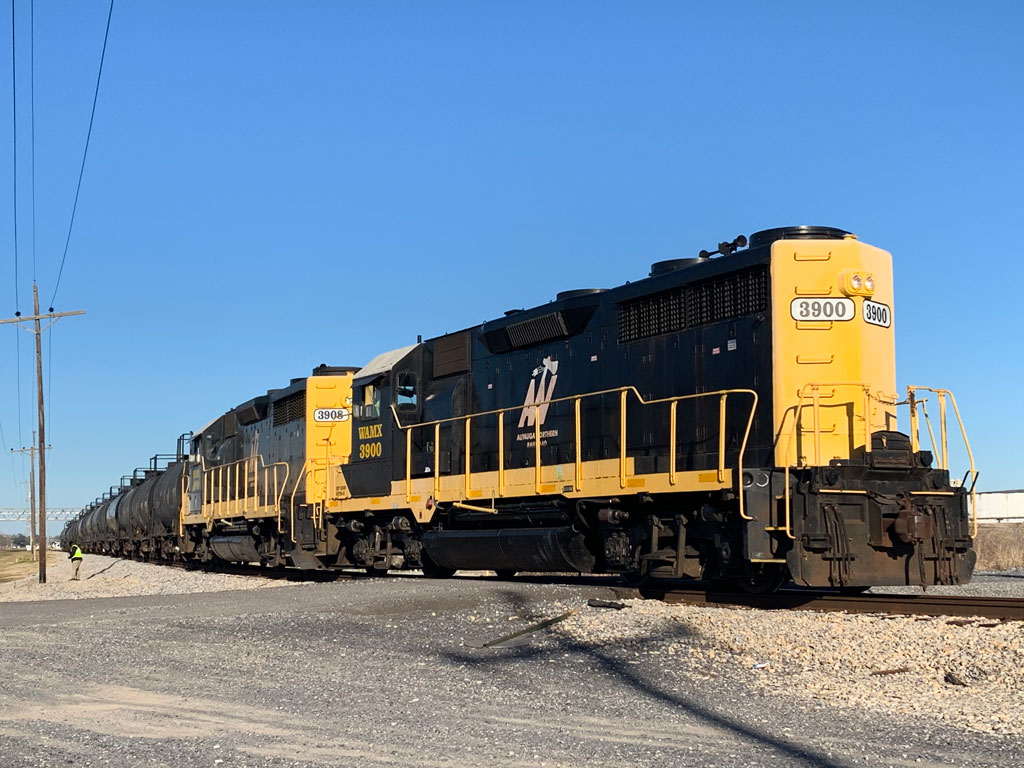
ATLANTA — The strategy shift that Norfolk Southern announced yesterday — focusing on providing consistent service and volume growth rather than on costs and the operating ratio — received a generally positive reception from Wall Street analysts.
But they also said that to win over skeptical investors NS will have to prove that it can restore service to 2019 levels — and then keep it there.
To break the cycle of railroad service problems that occur every few years, NS will maintain its train crew levels during downturns, CEO Alan Shaw said during the railroad’s investor day on Tuesday. As a result, NS will be able to handle volume rebounds, prevent disruptions, and provide resilient service that will convince shippers to build their supply chains around rail, Shaw says.
Wall Street has traditionally expected railroads to cut costs and shed workers as traffic declines during a recession. Recently, however, some analysts have begun asking how railroads can become more resilient in the wake of widespread service problems related to crew shortages at the big four U.S. railroads.
Maintaining crew levels will create a short-term hit to profits during downturns, Shaw says, but will allow NS to provide consistent service and gain volume, boost revenue, and increase profits over the long term.
“We agree with the strategy to invest in resiliency and service to drive growth and believe CEO Alan Shaw has a real opportunity to drive culture change that benefits … investors over time,” Susquehanna Financial Group analyst Bascome Majors wrote in a note to clients.
Baird Equity Research analyst Garrett Holland noted that NS’s train crew approach will hurt profit margins during downturns. “The cumulative benefits (examples: more robust volume recovery, lower turnover/training costs, reliable service) outweigh the short-term impacts,” he wrote.
“We completely endorse this approach even if investors who historically have relied on rails for earnings stability in a recession may raise an eyebrow,” Morgan Stanley analyst Ravi Shanker wrote in a note to clients.
“This is a pivot we believe is needed,” BMO Capital Markets analyst Fadi Chamoun wrote, noting that railroad earnings are becoming more dependent on volume growth.
“The medium term volume growth opportunity has the potential to be attractive and, more importantly, is better than the stagnant growth alternative that could bring a negative regulatory response,” Chamoun wrote.
Surface Transportation Board Chairman Martin J. Oberman has been highly critical of the big four railroads’ inability to meet freight demand this year. He places the blame on a wave of employment cutbacks that began in 2017, which was followed by deep furloughs as rail traffic tanked at the onset of the pandemic. Oberman has urged railroads to dig out of their current service hole, return to growth mode, and commit to maintaining adequate resources.
Congress, meanwhile, is considering bills that would give the STB more regulatory power over railroads.
“Railroads have little choice in terms of pivoting to enhanced service … It is a requirement for the rails to reduce regulatory risk,” Chamoun wrote.
NS’s new strategy may get tested in 2023, when many analysts expect an economic slowdown that would reduce freight volume.
“We firmly agree with the themes of service improvement, network resiliency, and customer-centrism as the rational path forward for Class I railroads from here, despite the near-term operating cost of building that resiliency by continuing to invest in headcount,” Majors wrote. “That said, we also expect investors to adopt show-me skepticism toward pivot to growth strategies.”
The reason for skepticism? Over the past decade, railroad volume has not kept pace with economic growth while truck tonnage has risen sharply.
NS’s volumes are down 4% over the past decade, Wolfe Research analyst Scott Group notes. Coal volumes have declined 52% over that period, he says, while the rest of NS volume is up 8%.
“The [NS] long-term plan hinges on a U-turn in a 15-year trend of declining rail volumes and the 5-year trend of industry share loss to truck in intermodal,” Shanker wrote.
NS will have to prove to shareholders that its plan works, analysts said. “Consistency in execution over time will be needed to convince investors,” Holland wrote.
Independent analyst Anthony B. Hatch says NS’s service-and-growth strategy is “another setback to the Cult of the Operating Ratio,” his term for Wall Street’s hyperfocus on the key efficiency metric.
Shanker said it was clear from investor day that “this is not the O.R.-driven, PSR-focused” Norfolk Southern of 2019, when the railroad announced it would adopt an operating model based on Precision Scheduled Railroading principles.
NS executives say several trends favor a shift of freight from highway to rail, including environmental benefits and cost savings compared to truck, the rise of e-commerce, retailers wanting to keep more inventory closer to consumers, and manufacturers returning some production to the U.S.














Alan Shaw is a completely different kind of railroader in that he came out of marketing instead of the law department which tends to be more focused on numbers and metrics.
Here’s a link to my video where I had a chance to meet him.
https://youtu.be/HOKraJdUWDU
@Joe Kurland: Sounds good in theory but does not occur in practice. BNSF did not add infrastructure [2nd Main Track] on the Transcon until the pain of trying to run 80-100 trains per day got so great that something had to be done.
There is no ROI in investing in infrastructure when business declines.
Maybe the railroads should work to find new customers so when there is a drop in business they can use the crews to run service those customers. They can also use the slower times to work on their infrastructure so they are ready for increases in business.
I’ve long said that downturns are a time to invest in infrastructure to increase capacity when the downturn is over. This applies to Amtrak as well as to freight railroads.
I rather suspect that, at the core of this “new” thinking, is the threat of increased regulatory oversight. And for that we can all thank the current members of the STB and especially Chairman Oberman.
I’ll also offer kudos to Alan Shaw for demonstrating the leadership skills (and guts) to attempt this change in direction. I truly hope he and NS are successful in this effort. I don’t think it’s hyperbole to state the future of the railroad industry is dependent on it.
It is clear that allocation of capital to buy back stock was causing short term market distortions, which amplified the value of the buy back way more than the market would normally consider it.
Does this mean the analysts think the hedge funds have stripped out all the assets they can and it’s time to cash out?
Mr. Giblin- I subscribe to Classic Trains along with Trains and Model Railroader and I received my copy of the Winter edition of Classic Trains and look forward to reading your article on the Santa Fe. The Santa Fe is one of my favorite railroads both in prototype and model railroad. A classy and well respected railroad was the Santa Fe. A little bit of history… The Santa Fe was so proud of their passenger train the Super Chief that they wouldn’t allow or gave Amtrak permission to use that name or brand when they took over all passenger service hence the name Southwest Chief was adopted.
Enjoy the article, it starts in page 60. Most of the photos used in the piece were taken by my long-time good friend and fellow former Santa Fe employee Joe McMillan.
Allow me to put in a plug for my new Santa Fe article in the Winter 2022 issue of Classic TRAINS Magazine. Well worth the cost of a copy even if you do not currently subscribe.
The Santa Fe was an example of a well run and organized railroad. From their passenger trains such as the El Capitan and Super Chief to their freight trains. Even their classic design on their locomotives have stood the test of time and are and still one of the most popular designs on model trains. Two railroads come to mind when you think of greatness. The Santa Fe in the West and the Pennsylvannia in the East. Today’s railroads have so much to be desired and a lot of catching up to do if they are to be considered for future generations and rail historians to be considered or talked about in the same breath as these historic giants in rail history
Joseph C. Markfelder
When I arrived at Santa Fe in 1990 one of the first things I heard Mike Haverty say was “you can’t starve a railroad into prosperity”. During the next six years Santa Fe got rid of the stuff that didn’t work and focused like laser on what did.
We ended up running longer trains not to lower the OR but rather because we had so much new intermodal business. Johnny Bryan Hunt later said he did the deal with Santa Fe because Mike Haverty understood the key to success and profitability was maintaining very good track which allowed higher train speeds.
Every one of us at Santa Fe recognized we were in a service business and the way to succeed in that kind of business is simply give good service, very good service. Like one of our print ads said. “If it’s Super it has to be Santa Fe.”
ATSF and BNSF have had a number of great CEO’s. Haverty was one of them.
We’ll see. PSR needs to be ditched as well though if they plan on making headway. It’s causing far too many issues along with shortages in every department and extreme cost-cutting that is going to end up having catastrophic consequences. You can only dodge so many bullets.